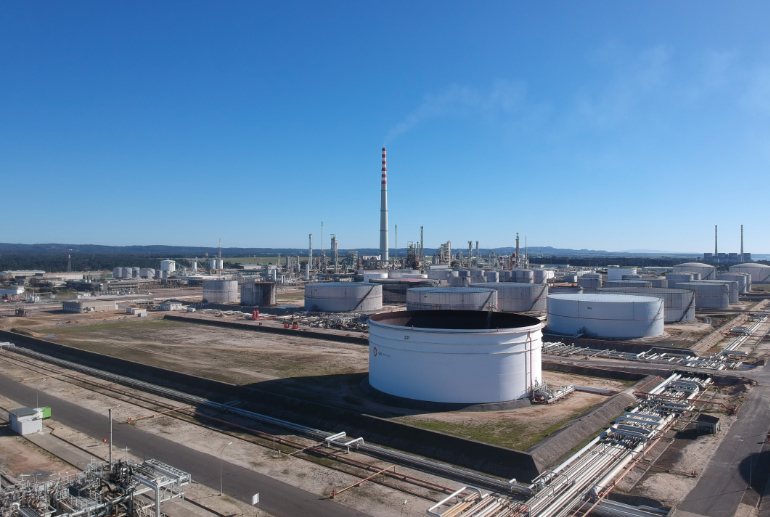
Above-Ground Storage Tank Cathodic Protection
Many municipal systems have storage tanks made of carbon steel. The ground storage tank and the high-water tower are the two main variations. Corrosion is a constant worry for every steel building. Premature breakdowns and interruptions in operation due to maintenance are two consequences of corrosion on storage tanks. However, when used appropriately, cathodic protection (CP) halts the corrosion reaction. The corrosion reaction and the function of cathodic protection for both raised storage tank towers and ground storage tanks are briefly discussed.
Basics of Corrosion
Steel spontaneously transforms into iron oxide, a more stable chemical state, when it comes into contact with water and oxygen. Corrosion is the term used to describe this oxidation/reduction cycle that affects the steel. Understanding the chemical mechanism is crucial for comprehending and preventing corrosion. For steel to corrode, four essential components must be present, and when they do, they form what is known as a galvanic cell. What the galvanic cell needs are
Anode: Corrosion occurs at the anode, which has a lower electronegative potential than the cathode.
Cathode: The cathode, which has a greater electro-potential than the anode, is where current flows from the anode to complete the corrosion process.
Metallic path: The metallic path completes the reaction circuit by allowing electricity to flow.
The corrosion-causing reactants are present in the electrolyte, a conducive environment, for corrosion to take place.
Unfortunately, any steel construction contains three of the four components by default.
Due to slight variations in electrical potential that naturally occur from one location to another over the surface of a steel structure, steel is not completely homogenous at the microscale. Thus, the anode and cathode may both be produced by the same piece of steel. Additionally, the nearby cathodic and anodic steel areas naturally have a metallic route since steel is an electrical conductor. Thus, all that is required for the corrosion process to start is a suitable electrolyte, such as water, soil, or even a tiny layer of condensation.
When a metallic structure’s electrical current is interrupted, corrosion takes place, causing iron from the steel to combine with oxygen and water to generate iron oxide. Instead of a corrosion process occurring where the current returns to the metallic structure, hydrogen molecules instead develop at the surface to shield the steel from the elements.
One amp of current consumes around 20 pounds of steel in a year, with the rate of corrosion being a function of current flow. Thus, over a long period, milliamps of electrical current can cause irreparable damage to the bottom, side walls, and roof of steel storage tanks. Storage tanks are susceptible to rapid failure if not shielded from these corrosive processes.
Internal Corrosion
Coatings are the main line of defense used by internal corrosion tank designers to prevent corrosion on the wetted inside surfaces of water storage tanks. However, coating systems fall short of perfection and deteriorate with time. Everywhere there are gaps, breaks, or coating failures, the galvanic corrosion cell will swarm into action and continue unabatedly unless handled. Corrosion is a widespread occurrence. Installing a cathodic protection system within the storage tank is a typical method of enhancing the coating system.
Cathodic protection interrupts the corrosion cycle by applying electrical current to those portions that are not separated from the environment by coating. Therefore, when correctly applied and maintained, the CP and coating combination function together to stop the corrosive reaction.
There are two main categories of cathodic protection systems. The galvanic system, which uses anodes composed of metals that are naturally more electronegative than steel, is the first category. Magnesium and Zinc are often utilized as anode materials in storage tanks. The second kind is an impressed current system, which combines longer-lasting anode materials with an external power source, or rectifier, that transforms AC electricity into DC.
Anodes can be suspended, hung, or attached to the tank in several different ways to provide inside protection. The water quality, tank coating quality, intended anode system design life, accessibility to power, the possibility for freezing, and other elements all have an impact on the design of the CP system.
Outside Corrosion
Corrosion may occur on damp surfaces outside as well as within an object. External tank bottoms on ring wall foundations are susceptible to corrosion from ground contact. To safeguard the tank bottom in these applications, impressed current CP systems are the standard engineering design approach. When maintained properly, impressed current systems often have longer design lives than galvanic systems and do not require the replacement of sacrificial galvanic anodes beneath tanks.
There are several configurations for external tank bottom CP systems, just like there are for internal tank CP systems. Using linear anodes in concentric rings is one such method. The major benefit of the linear system is that everything under the tank is factory constructed and tested before installation and the only installation effort is to place the anode assemblies by the design drawings and installation instructions. In addition to guaranteeing the best system dependability, this makes for an incredibly simple installation with low installation costs.
Benefits of using Consultech:
- Experience with various kinds of cathodic protection systems spanning over 58 years
- Cathodic protection system testing, installation, and upkeep experience for all kinds of structures globally
- NACE corrosion engineers and professionals with high levels of training
- team members with prior client-side CP project expertise
- having experience leading corrosion divisions of big utilities and pipeline industries and multimillion-dollar CP projects
- Compared to certain regularly used CP systems, Consultech’s several unique cathodic protection technologies are more affordable and have longer lifetimes.
Your corrosion issues are CONSULTECH’s primary concern. In addition to project management and comprehensive turnkey solutions, we are prepared to help with your requirements for corrosion engineering and field service, including design, production, installation, commissioning, and continuing maintenance. Additionally, we provide a huge selection of unique corrosion protection materials.
Contact our team of corrosion specialists for additional information, to ask a question, or to request a price. Within 24 hours, we’ll give you a call or reply to your email. Call +91 9824077820 for assistance and email consultech_cp@yahoo.com right away.




